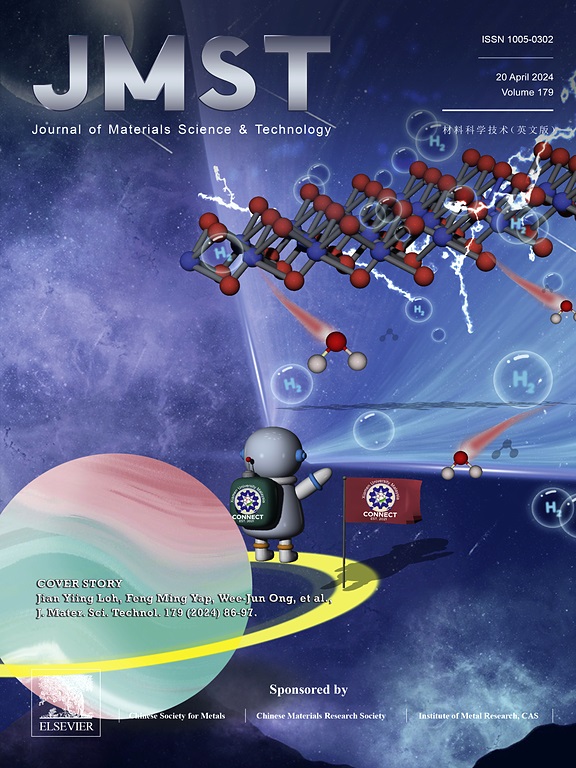铬浸出诱导三金属cofecr -氢氧化物在Ni泡沫上的原位表面重建以实现高效水氧化
IF 11.2
1区 材料科学
Q1 MATERIALS SCIENCE, MULTIDISCIPLINARY
引用次数: 0
摘要
合理调控催化剂表面结构向高效电解方向必然发生的动态演变仍然是一个重大挑战。本文采用简单的电沉积技术,在泡沫镍上合成了钴铁铬三元双氢氧化物(DH)作为整体催化电极(CoFeCr-DH/NF),用于析氧反应(OER)。优化后的Co0.7Fe0.3Cr-DH/NF电极具有良好的催化活性和稳定性。在电流密度为100 mA cm−2时,过电位仅为281 mV,远远超过其他单片催化电极。此外,我们阐明了OER过程中金属价态的变化,发现了Co2+的电化学氧化为Co3+和Cr的浸出。重要的是,Cr浸出可以诱导表面重构,这不仅优化了表面电子结构,提高了内在活性,而且增加了表面不规则性,扩大了电化学活性表面积,从而显著提高了OER性能。理论计算表明,OER优先发生在相邻的cr浸出Co位点,并证实了cr浸出的三金属CoFeCr-DH具有出色的OER性能。本文章由计算机程序翻译,如有差异,请以英文原文为准。

Cr-leaching induced in-situ surface reconstruction of trimetallic CoFeCr-hydroxide on Ni foam for highly efficient water oxidation
Rationally regulating the inevitable dynamic evolution of the catalyst surface structure towards high efficiency for water electrolysis remains a significant challenge. Here, the ternary cobalt-iron-chromium double hydroxide (DH) was synthesized on nickel foam as a monolithic catalytic electrode (CoFeCr-DH/NF) for the oxygen evolution reaction (OER) via a simple electrodeposition technique. The optimized Co0.7Fe0.3Cr-DH/NF electrode exhibited remarkable catalytic activity and stability. The overpotential at the current density of 100 mA cm−2 is only 281 mV, far exceeding those of other monolithic catalytic electrodes. Furthermore, we elucidated the variations in the valence states of metals during the OER process and found the electrochemical oxidation of Co2+ to Co3+ and leaching of Cr. Importantly, Cr-leaching can induce surface reconstruction, which not only optimizes the surface electronic structure to enhance the intrinsic activity but also increases the surface irregularity to enlarge the electrochemically active surface area, thereby significantly improving the OER performance. Theoretical calculations revealed that OER preferentially occurred at the adjacent Cr-leached Co sites and confirmed that the Cr-leached trimetallic CoFeCr-DH performs an outstanding OER performance.
求助全文
通过发布文献求助,成功后即可免费获取论文全文。
去求助
来源期刊

Journal of Materials Science & Technology
工程技术-材料科学:综合
CiteScore
20.00
自引率
11.00%
发文量
995
审稿时长
13 days
期刊介绍:
Journal of Materials Science & Technology strives to promote global collaboration in the field of materials science and technology. It primarily publishes original research papers, invited review articles, letters, research notes, and summaries of scientific achievements. The journal covers a wide range of materials science and technology topics, including metallic materials, inorganic nonmetallic materials, and composite materials.
 求助内容:
求助内容: 应助结果提醒方式:
应助结果提醒方式:


